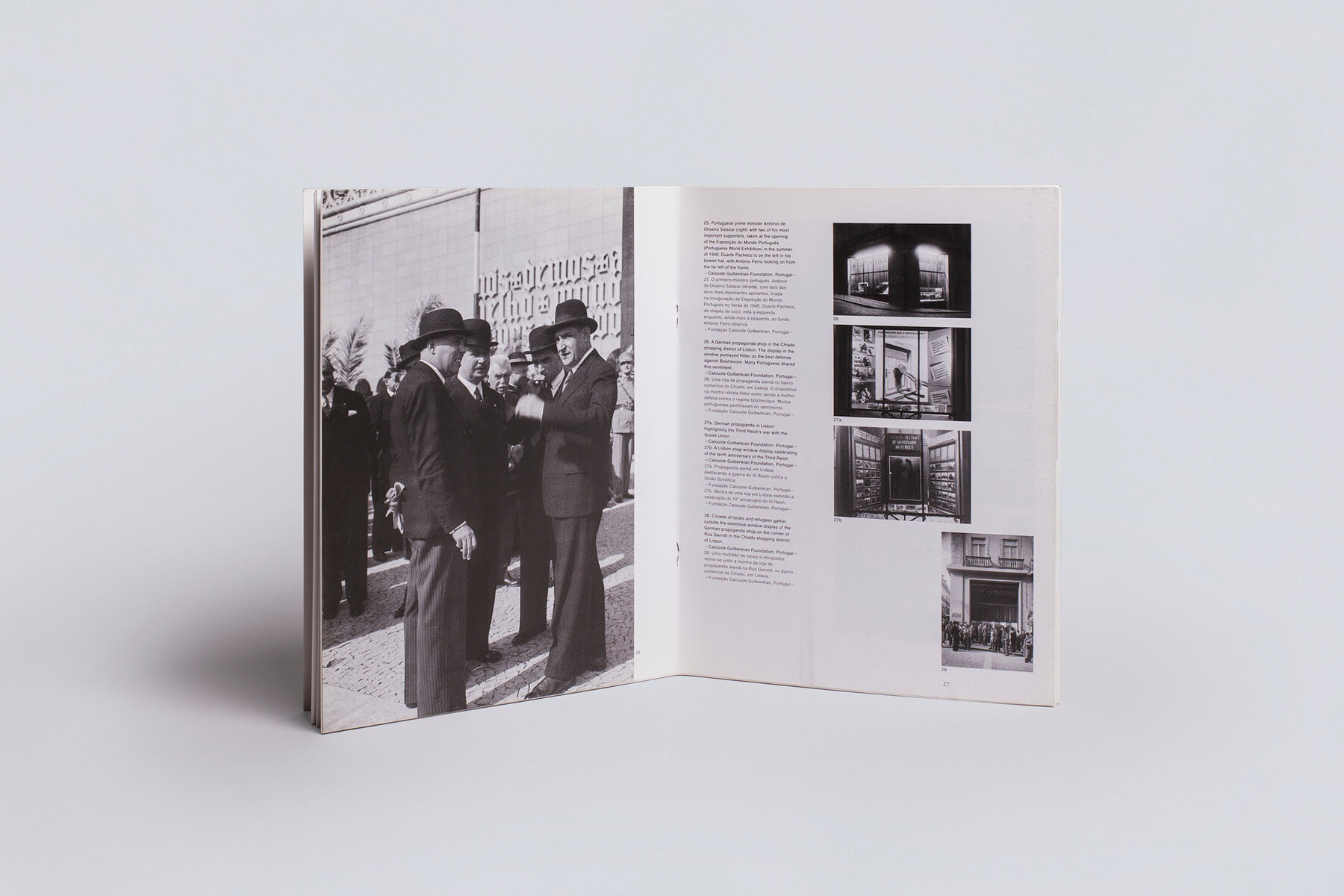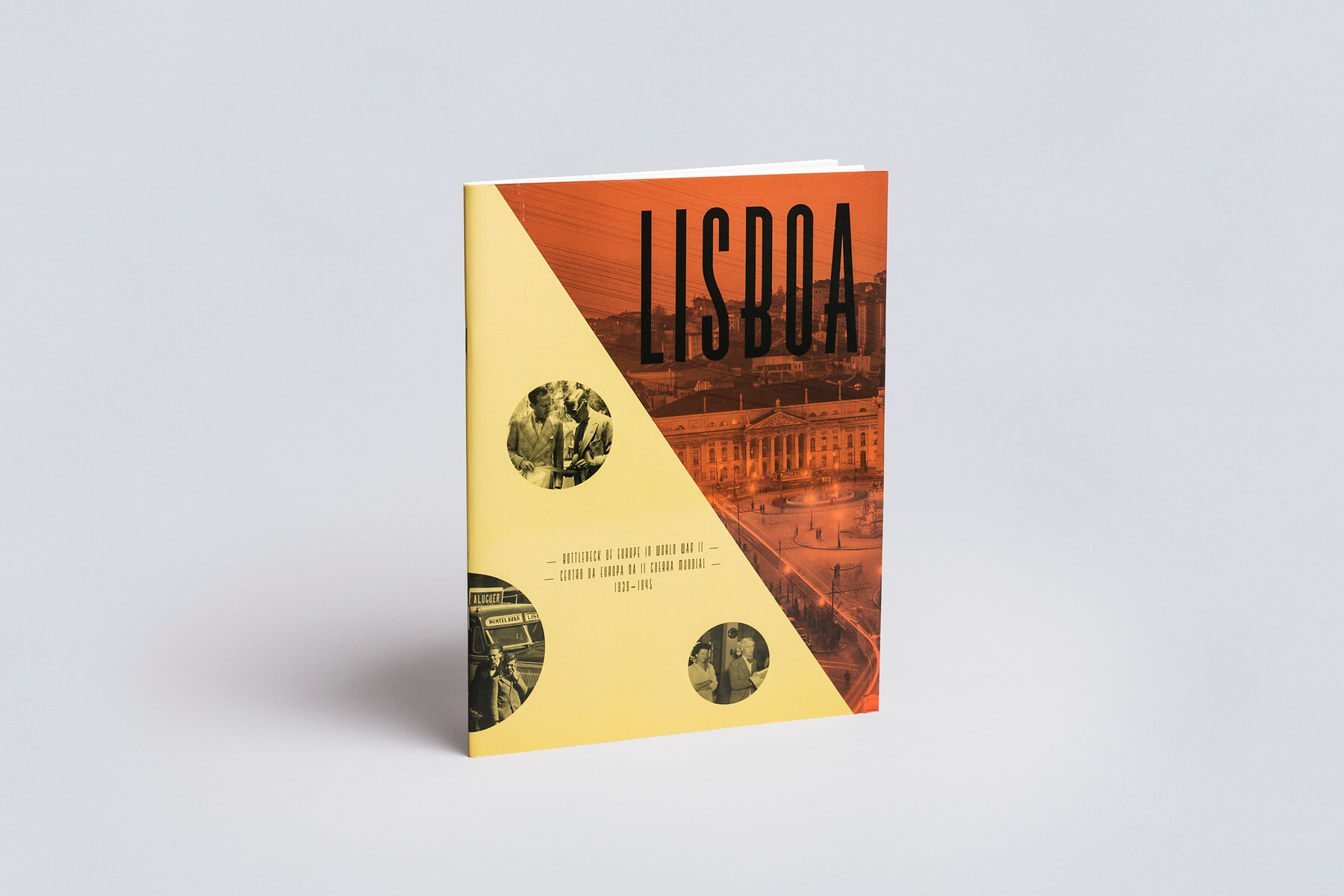This publication accompanies the exhibition Lisboa: Bottleneck of Europe in World War II – 1939-1945, curated by Emma Lochery, which was held at the Torreão Poente da Praça do Comércio between September and November 2012. With texts by António Costa and Neill Lochery, the publication reproduces around 80 predominantly photographic documents. These hail from national and international archives and record the daily life of the city of Lisbon during World War II. The exhibition followed the publication of the book Lisbon: War in the Shadows of the City of Light, 1939-45, by Neill Lochery (PublicAffairs, USA, 2012).
“A portrait of Lisbon as if it were a mirror game. Thinking of how Lisbon was during World War II, means finding, irretrievably, a series of paradoxes. On the one hand, the ‘Estado Novo’ dictatorship, a repressive regime, in an isolated country clinging to its colonial past that it stubbornly refused to let go of and which it indeed sought to glorify in the Portuguese World Exhibition of 1940. A Portugal still dominated by an agrarian reality that alienated the country from its time. Then on the other hand, Salazar’s “neutrality”, his fears of entering a war that divided Europe allowed the existence of bustling and more or less underground movements on the part of both the Allies and Axis powers, characterized by schemes of espionage and counterespionage, to which the regime turned a blind eye, seeking to benefit from this in the outcome.”
-António Costa
“At the end of the movie Casablanca, as Rick Blaine and Captain Louis Renault head off to start their “beautiful friendship” by joining the Free French Garrion at Brazzaville, the plane carrying Victor Laszlo and Ilsa Lund takes off into the fog. It is to “neutral” Lisbon that they are headed with their letters of transit. In real life, the city of Lisbon during World War II more than resembled the film set; to many people who worked in the city during the latter stages of the war, Lisbon became affectionately known as “Casablanca II”. The real-life version had all the ingredients of the fictional storyline: broken romances; desperate refugees trying to obtain the correct paperwork and selling the family jewels to finance their onward passage; a thriving black market as supply dictated that the prices of diamonds and other rare stones fell to record low levels; cafés and hotel bars full of refugees and spies scattered across the city centre and along Lisbon’s coastline resorts.”
-Neill Lochery





